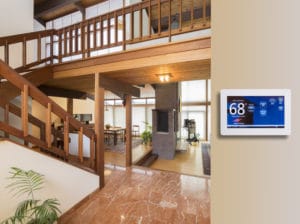Here are a few great fall/winter tips for helping to keep your home warm and also help on your energy bills from your friends at Stonebriar Property Inspections.
As you are aware, colder weather is here. Before those winds begin to howl, be sure your home is ready for the chill. Not only can draft-proofing your home help in colder weather, but even homeowners in warmer climates can draft-proof their homes to help save on energy and moderate their home’s indoor climate. Air leaks not only allow cold air in, but they also allow warmed air to escape.
If you think you don’t have to worry about drafts because you have a relatively new home, think again. Whether a home was recently built or a century old, virtually every home has a draft. Drafts form where there are gaps left unsealed during construction or where older homes have areas that have weathered or shifted.
Now is the perfect time to draft-proof your home. Unwanted outside air can enter your home through a variety of places, including the areas around pipes leading to the outdoors, gaps around doors and windows, the area along attic doors, and even where ceilings and walls meet. Drafts can also form around wiring holes from electronics, furnace flues and ducts, recessed lights and in basements where the foundation meets the wood frame of the rest of the house.
Cold air seeping in and warmed air escaping your home through one or more gaps and crevices can boost your energy bill. Taking the necessary steps to seal air leaks around your house, adding insulation where necessary, will not only keep your home more energy efficient but is estimated to provide up to a 15 percent savings on your heating and cooling bills, according to the Environmental Protection Agency. Air leaks can also allow unwanted moisture to enter your house and even provide an entryway for unwelcome critters and pests.
Here are six easy ways to cut down on drafts in your home:

- Install weatherstripping and door sweeps. Even a novice do-it-yourselfer should be able to attach adhesive-backed weather stripping and door sweeps. The key is purchasing the right size to fit your door. Measure your door before heading off to the local home supply store.
- Apply window film across the inside of drafty windows. Don’t forget those attic windows, lol. This clear product is applied from the top down, using .a source of heat, such as a hairdryer.
- Hang insulated drapes in rooms where you seldom open them. Insulated curtains and drapes work well to keep warmed air from escaping around windows, but they are at their best when closed. If you tend to let in the winter sunlight in the main living areas of your house, consider hanging insulated drapes in secondary areas, like bedrooms, where they can be kept closed when no one is using the room.
- Re-apply caulk around windows and doors. Over time, caulk can dry out, crack and flake off. Re-applying caulk around windows and doors will help to seal up gaps once again. Do not, however, seal your attic to the outside. For a healthy home environment, concentrate on your main living area and allow your attic to breathe.
- Plug cracks, holes, and crevices with insulation. While spray foam can be useful for sealing up gaps, you may need to turn to rigid insulation to cover up larger holes.
- Get crafty with a door snake. These fabric rolls can be very useful in keeping out drafts when laid across the bottom of a door. If you don’t have the minimal crafting skills required, a rolled-up towel will do the trick.
One important word of caution. Sealing up gaps and crevices can inadvertently result in a new problem: trapping harmful pollutants, radon gas and carbon monoxide gas indoors. Energy Star recommends having your house checked periodically for radon or pollutants— both before and after doing any air sealing; You may be advised to install ventilation fans in some areas of your home.
Following these tips can help to weatherize your house. Not only will you and your family member be more comfortable, you will save a nice chunk of change through reduced energy bills.




